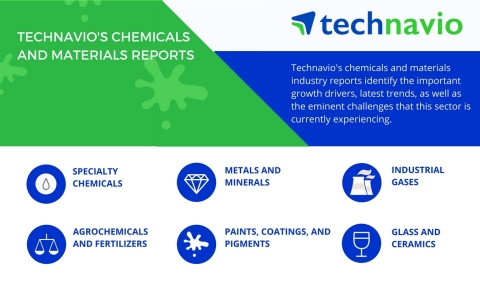LONDON--(BUSINESS WIRE)--Technavio’s latest market research report on the global release coating market provides an analysis of the most important trends expected to impact the market outlook from 2017-2021. Technavio defines an emerging trend as a factor that has the potential to significantly impact the market and contribute to its growth or decline.
The global release coating market is expected to grow owing to the increase in demand for release coatings in applications such as labels, tapes, medical, hygiene, and others. The labels segment accounted for the largest market share of 51% in 2016.
According to Hitesh Bhatia, a lead analyst at Technavio for paints, coatings, and pigments research, “The growing packaging industry and increasing demand for digital printing is expected to drive the demand for release coatings as these are used on price labels, food labels, bar codes, and others. Digital printing is an efficient and cost-effective method for producing labels with crisp text, photographic-quality graphics, and vibrant colors. Digital printing technology enhances the brand identification and marketing of products.”
This report is available at a USD 1,000 discount for a limited time only: View market snapshot before purchasing
Buy 1 Technavio report and get the second for 50% off. Buy 2 Technavio reports and get the third for free.
The top three emerging market trends driving the global release coating market according to Technavio research analysts are:
- Growing preference for environment-friendly products
- Introduction of liner-less label technology
- Increasing adoption of UV-curing technology
Looking for more information on this market? Request a free sample report
Technavio’s sample reports are free of charge and contain multiple sections of the report including the market size and forecast, drivers, challenges, trends, and more.
Growing preference for environment-friendly products
The stringent rules and regulations by the European Commission and the Federal government agencies aim at achieving a green environment with minimum or zero harmful emissions. The release coatings companies adhere to these regulations to achieve sustainable growth in the future. Stringent regulations formulated by the EU focus on reducing volatile organic compounds (VOCs) emissions from solvent-based coatings. These regulatory policies have led to the emergence of environment-friendly products over the last five years.
RecuLiner and Ahlstrom-Munksjö have entered into a partnership to develop and promote the use of silicone-coated release liners. The silicon based-coated release liners from PSA labels are reprocessed to produce cellulose fiber insulation.
Introduction of liner-less label technology
The free radical curing silicones are crucial for labels used in a wide variety of film or paper surfaces. In a standard PSA label, the release liner accounts for more than 40% of the material of the label. It ends up in the formation of waste. Sustainability and environmental concerns regarding release liner wastes have led to the improvisations and innovations in the liner-less label technology.
In 2015, Evonik Industries introduced TEGO RC silicone release coating that is used in liner-less labels. It allows successful in-line coating of the top surface of the printed substrates without interfering with the substrate and printing. The adhesive can also be applied in-line on the reverse side of the label. Similar to a tape, the label is rolled up without the support of liner. The applications of liner-less label technology include a variety of labels such as liner-less thermal print labels, micro-perforated decorative labels, wrap around labels.
Increasing adoption of UV-curing technology
Radiation curable release coatings contain fewer amounts of solvents and can be cured at temperatures slightly higher than room temperature. The polymerization is mainly initiated by electron beams (EB) or ultraviolet light (UV) exposure.
“UV-curing technology improves the turnover time and offers better curing. However, the technology is relatively costlier and the components used are complex. These factors have limited the share of EBs in the current packaging market to around 5%. Reduced prices of raw materials and equipment and innovations in technology will lead to an increase in the demand for UV-curing technology. The growth prospects are expected to increase the demand in the release coating market,” says Hitesh.
Browse Related Reports:
- Global Intumescent Coatings Market 2017-2021
- Global Ink Resins Market 2017-2021
- Global Specialty Surfactants Market 2017-2021
About Technavio
Technavio is a leading global technology research and advisory company. Their research and analysis focuses on emerging market trends and provides actionable insights to help businesses identify market opportunities and develop effective strategies to optimize their market positions.
With over 500 specialized analysts, Technavio’s report library consists of more than 10,000 reports and counting, covering 800 technologies, spanning across 50 countries. Their client base consists of enterprises of all sizes, including more than 100 Fortune 500 companies. This growing client base relies on Technavio’s comprehensive coverage, extensive research, and actionable market insights to identify opportunities in existing and potential markets and assess their competitive positions within changing market scenarios.
If you are interested in more information, please contact our media team at media@technavio.com.




